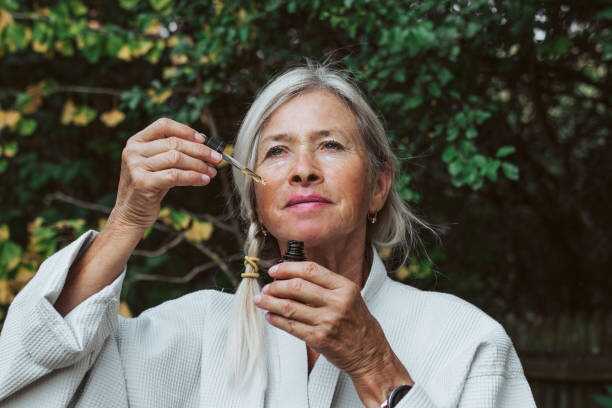Aging changes everything how we move, how we think, and even how we feel in our skin. But while we often talk about wrinkles and dryness, we don’t always talk about what those signs mean.
Skincare in later life isn’t just cosmetic; it’s a reflection of overall wellbeing. And in many cases, it's a window into the quality of care an older person receives.
In older adults, skin can become more than just a canvas of age—it becomes a signal. From dehydration to chronic illness, poor skincare often mirrors poor health. Unfortunately, in care environments, that can go unnoticed until deeper problems arise. In these cases, skincare becomes not just a personal routine but a medical and ethical issue.
The Biology of Aging Skin
Aging skin doesn’t just look different—it behaves differently. The dermis thins out, subcutaneous fat reduces, and collagen fibers break down. This means skin loses elasticity, becomes more fragile, and is less able to heal from wounds. Oil glands also produce less sebum, which leads to dryness and flaking. Older skin can’t regulate temperature as efficiently, making it more susceptible to cold, heat, and even minor injuries. The body’s ability to generate new skin cells also slows, causing dullness and uneven tone.
The decrease in natural hydration and repair mechanisms means the skin’s outer barrier becomes compromised. It loses its ability to protect against environmental threats and infections, making something as simple as moisturizing not just helpful—but essential.
Environmental and Lifestyle Impacts
Skin aging isn’t only a biological process—it’s accelerated by lifestyle and environment. Harsh weather, prolonged sun exposure, and even central heating or air conditioning can dehydrate and irritate the skin.
Diet plays a role, too. A lack of essential fatty acids or vitamins like A, C, and E weakens the skin’s structure and function. Hydration is equally critical, yet many seniors drink less water throughout the day, which exacerbates dryness from within
Medications used for chronic conditions can also impair skin health. Diuretics, for example, can reduce moisture levels. Others, like anticoagulants, increase the risk of bruising. Combined with conditions like diabetes or reduced mobility, this makes the skin an especially vulnerable organ in older adults.
Skincare as a Health Indicator
The condition of the skin can reveal a great deal about someone’s living situation. When skincare for seniors is overlooked, consequences can go far beyond cosmetic concerns. Chronic dryness, pressure sores, and unnoticed infections may be signs of a deeper issue—especially in elder care settings where nursing home wrongful death cases have sadly brought neglect to light.
Skin that is persistently dry, cracked, or inflamed may not be receiving proper care. And in institutional settings, poor skin condition can sometimes point to inadequate hygiene, nutrition, or attention from caregivers. In this way, skincare becomes not just a health factor but a quality-of-life marker.
Skincare can also impact emotional health. People feel better when they look better, and something as simple as applying lotion or cleansing the face can restore dignity, especially for those dealing with memory loss, disability, or depression. Touch, attention, and routine all contribute to a stronger sense of self.
What Science Tells Us About Aging Skin
Facial aging isn’t limited to surface-level changes. There are structural changes beneath the skin that play a major role in its appearance and function. As people age, bones shrink, facial fat shifts, and connective tissues weaken. These factors contribute to sagging, hollowness, and an overall loss of firmness.
Age-related structural shifts can significantly affect skin function and appearance, illustrating how facial features change over time. It’s a dynamic, multi-layered process—not just about lines or wrinkles.
The skin’s ability to renew itself also slows dramatically. In young adults, skin cell turnover happens about every 28 days. For older individuals, it can take up to 60 days. Dead skin cells linger longer, contributing to dullness and increasing the risk of buildup that can lead to irritation or infection. Understanding this biology is crucial when designing skincare routines for the elderly. Products must be gentle, effective, and suited for sensitive, changing skin.
Building an Effective Skincare Routine for Seniors
The basics of skincare remain the same, but the products and methods need adjusting for older skin. Cleansing, moisturizing, and sun protection form the foundation of any effective routine, but it’s how these steps are performed that makes the difference.
Avoid harsh soaps or cleansers that can strip the skin. Choose pH-balanced, fragrance-free formulas specifically designed for dry or sensitive skin. Gentle cleansing with lukewarm water helps preserve natural oils and prevent further dehydration.
Dry, thinning skin is more vulnerable in older adults, which is why selecting the right product matters. Lotions enriched with hydrating ingredients in moisturisers can improve skin resilience and support barrier function, especially when used consistently. Look for ingredients like glycerin, ceramides, and hyaluronic acid.
Sun protection remains important. Even limited exposure to UV rays—through windows or brief walks outside—can accelerate skin aging. Daily application of SPF 30 or higher is recommended, especially on exposed areas like the face and hands.
Skincare in Long-Term Care Settings
Inrecommended, especially on exposed areas like the face and hands. nursing homes and assisted living environments, skincare takes on an added layer of importance. It reflects not only personal hygiene but also the quality of care provided by the facility.
Consistent moisturizing, bathing, and attention to skin integrity are essential parts of elder care.
Residents with dry, cracked, or infected skin may not be receiving the care they need. These aren’t just cosmetic issues—they’re indicators of potential neglect. Simple lapses in skincare can spiral into infections, bedsores, and unnecessary suffering.
Daily skincare should be built into caregiving routines—not treated as optional. It also provides an opportunity for positive, respectful touch, which is known to reduce anxiety and foster emotional connection. It’s a moment of presence in a world where many older adults often feel invisible.
When to Be Concerned
Some skin changes are natural with age—but others should prompt concern. Unusual bruising, persistent rashes, open sores, and signs of infection require medical attention. Family members and caregivers should monitor these signs closely, especially in environments where the elderly depend on others for their care.
In more severe situations, overlooked skin issues may even signal systemic neglect, as seen in nursing home wrongful death cases. These tragic examples underline why daily skincare is more than a wellness routine—it’s a frontline health check.
Conclusion
Skincare in older adults is not a luxury—it’s a necessity. From physical protection to emotional comfort, the skin plays a central role in overall senior health. Whether you’re a caregiver, healthcare provider, or family member, paying attention to skin can reveal much more than dryness or wrinkles. It can be a call to action.
As the skin ages, it speaks—and we need to listen.



















